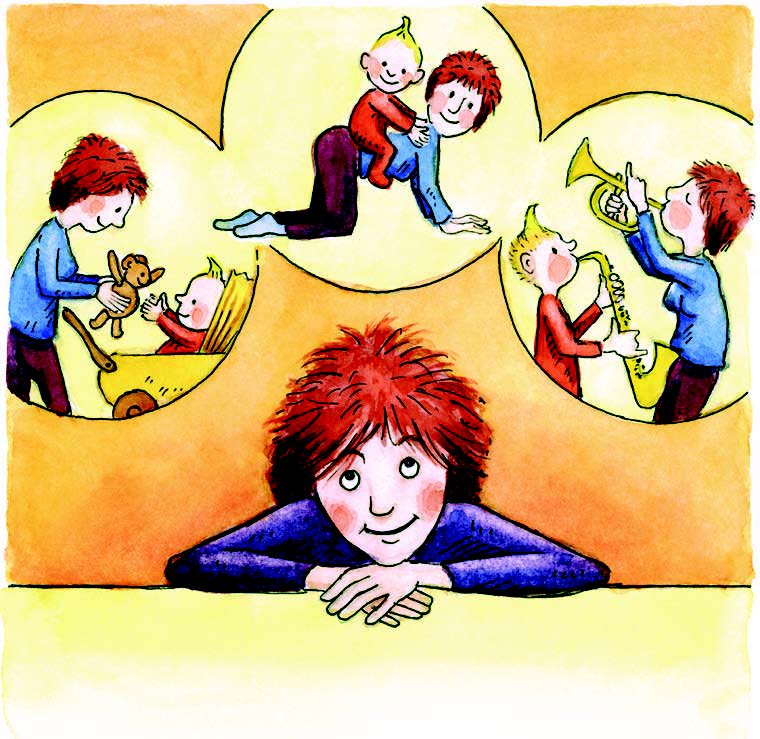2. Allogeneic blood stem cell transplantation
Author: Dr. med. Gesche Riabowol née Tallen, Dr. med. Jörn Kühl, Editor: Maria Yiallouros, English Translation: Dr. med. Gesche Riabowol (nee Tallen), Last modification: 2024/05/04 https://kinderkrebsinfo.de/doi/e76577
In allogeneic blood stem cell transplantation [allogeneic HSCT], the patient receives blood stem cells from another human being ("allo-" is a Greek syllable meaning "different" or "foreign"). This can be a relative, usually a matching sibling, or a voluntary, unrelated donor (also referred to as related donor or unrelated donor transplantation) [MUE2013d].
It is crucial that the donor largely matches with the patient regarding certain tissue characteristics on the surface of the white blood cells, the so-called HLAs (abbreviation for "human leukocyte antigens"), in order to keep the risks of
- 1. transplant rejection "host-versus-graft rejection", HvG) and
- 2. rejecting reactions conferred by the donated blood stem cells against the recipient's tissues ("graft-versus-host disease", GvHD)
as low as possible.
Allogeneic stem cell transplantation is preferably used for diseases in which the bone marrow is directly affected by the underlying disease or in which the cells produced by blood stem cells (for example, immune cells) do not function properly (for example, in leukaemias and anaemias). In such cases, it is not possible to obtain and transplant healthy stem cells from the patient.
In the case of leukaemias, another important fact is that by the donor-versus-recipient reaction (graft-versus-host disease) mentioned above, the donor's immune cells may not only recognize the recipient's healthy cells as foreign, but their leukaemia cells as well and subsequently destroy them. This so-called "graft-versus-leukaemia response" means that the risk of recurrence of some leukaemias is lower after allogeneic stem cell transplantation than after chemotherapy alone or after autologous stem cell transplantation.
Typically, allogeneic stem cell transplants are performed in children and adolescents with the following diseases:
- certain unfavourable forms and relapses of acute leukaemias (acute lymphoblastic leukaemia and acute myeloid leukaemia) as well as Non-Hodgkin lymphoma
- severe congenital diseases of the body's immune system (so-called immunodeficiencies, such as severe combined immunodeficiency (SCID), non-SCID immunodeficiencies, Kostmann syndrome, Wiskott-Aldrich syndrome)
- congenital or acquired diseases of haematopoiesis (e.g. severe aplastic anaemia, Fanconi anaemia, sickle cell disease, beta-thalassaemia)
- certain congenital metabolic diseases (such as leukodystrophies)
For congenital diseases with "defective" blood stem cells, allogeneic stem cell transplantation corresponds to a type of gene therapy. The direct "genetic correction" of one's own diseased stem cells by means of gene therapy still poses many problems and has unfortunately not yet proven to be a promising treatment approach.
Syngeneic stem cell transplantation
Syngeneic blood stem cell transplantation (HSCT) is the transfer of blood stem cells donated by the patient's identical twin. Since identical twins have the same genes and, therefore, the same tissue characteristics, syngeneic stem cell transplantation is a completely HLA-identical allogeneic transplantation. Syngeneic transplants are very well tolerated. Rejection of the graft by the recipient is very rare. Indication for syngeneic HSCT is similar to that of autologous stem cell transplantation (see chapter "autologous stem cell transplantation"). For patients suffering from a malignant disease of the blood, a stem cell transplant from the identical twin is not considered as feasible, as the latter may also have a predisposition to this disease.


